I wrote some code to show a circle and a rectangle randomly on the screen with PyQt6. and I want to detect if these two objects have a collision then I make them red otherwise I make them green.
But how should I detect whether there is a collision or not?
here is my code
from random import randint
from sys import argv
from PyQt6.QtCore import QRect, QTimer, Qt, QMimeData
from PyQt6.QtGui import QColor, QKeyEvent, QMouseEvent, QPainter, QPen, QPaintEvent, QBrush, QDrag
from PyQt6.QtWidgets import QApplication, QVBoxLayout, QMainWindow, QPushButton
class Window(QMainWindow):
def __init__(self) -> None:
super().__init__()
screenWidth = 1920
screenHeight = 1080
self.isRunning = True
self.windowWidth = 1200
self.windowHeight = 800
self.clockCounterVariable = 0
self.milSec = 0
self.seconds = 0
self.minutes = 0
self.hours = 0
self.setWindowTitle("Smart rockets")
self.setGeometry((screenWidth - self.windowWidth) // 2, (screenHeight - self.windowHeight) // 2, self.windowWidth, self.windowHeight)
self.setLayout(QVBoxLayout())
self.setStyleSheet("background-color:rgb(20, 20, 20);font-size:20px;")
self.clock = QTimer(self)
self.clock.timeout.connect(self.clockCounter)
self.clock.start(10)
button = QPushButton("Refresh", self)
button.setGeometry(20,self.windowHeight - 60,self.windowWidth - 40,40)
button.setStyleSheet("background-color:rgb(80, 80, 80);font-size:20px;")
button.setCheckable(True)
button.clicked.connect(self.refreshRectAndCircle)
rectangleWidth = randint(50, 500)
rectangleHeight = randint(50, 500)
self.rectangle = QRect(randint(0, self.windowWidth - rectangleWidth), randint(0, self.windowHeight - rectangleHeight - 80), rectangleWidth, rectangleHeight)
circleRadius = randint(50, 200)
self.circle = QRect(randint(0, self.windowWidth - circleRadius), randint(0, self.windowHeight - circleRadius - 80), circleRadius, circleRadius)
self.show()
def dragEnterEvent(self, event) -> super:
event.accept()
def keyPressEvent(self, event: QKeyEvent) -> super:
key = QKeyEvent.key(event)
if key == 112 or key == 80: # P/p
if self.isRunning:
self.clock.stop()
print("pause process")
self.isRunning = False
else:
print("continue process")
self.isRunning = True
self.clock.start(10)
elif (key == 115) or (key == 83): # S/s
self.closeWindow()
return super().keyPressEvent(event)
def mousePressEvent(self, event: QMouseEvent) -> super:
if event.buttons() == Qt.MouseButton.LeftButton:
if self.isRunning:
self.clock.stop()
print("pause process")
self.isRunning = False
else:
print("continue process")
self.isRunning = True
self.clock.start(10)
return super().mousePressEvent(event)
def clockCounter(self) -> None:
self.clockCounterVariable += 1
self.update()
def paintEvent(self, a0: QPaintEvent) -> super:
painter = QPainter()
self.milSec = self.clockCounterVariable
self.seconds, self.milSec = divmod(self.milSec, 100)
self.minutes, self.seconds = divmod(self.seconds, 60)
self.hours, self.minutes = divmod(self.minutes, 60)
painter.begin(self)
painter.setPen(QPen(QColor(255, 128, 20), 1, Qt.PenStyle.SolidLine))
painter.drawText(QRect(35, 30, 400, 30), Qt.AlignmentFlag.AlignLeft, "{:02d} : {:02d} : {:02d} : {:02d}".format(self.hours, self.minutes, self.seconds, self.milSec))
if self.collided():
painter.setPen(QPen(QColor(255, 20, 20), 0, Qt.PenStyle.SolidLine))
painter.setBrush(QBrush(QColor(128, 20, 20), Qt.BrushStyle.SolidPattern))
else:
painter.setPen(QPen(QColor(20, 255, 20), 0, Qt.PenStyle.SolidLine))
painter.setBrush(QBrush(QColor(20, 128, 20), Qt.BrushStyle.SolidPattern))
painter.drawRect(self.rectangle)
painter.drawEllipse(self.circle)
painter.end()
return super().paintEvent(a0)
def refreshRectAndCircle(self) -> None:
rectangleWidth = randint(50, 500)
rectangleHeight = randint(50, 500)
self.rectangle = QRect(randint(0, self.windowWidth - rectangleWidth), randint(0, self.windowHeight - rectangleHeight - 80), rectangleWidth, rectangleHeight)
circleRadius = randint(50, 200)
self.circle = QRect(randint(0, self.windowWidth - circleRadius), randint(0, self.windowHeight - circleRadius - 80), circleRadius, circleRadius)
self.update()
def collided(self) -> bool:
# return True if collided and return False if not collided
circle = self.circle
rect = self.rectangle
if __name__ == "__main__":
App = QApplication(argv)
window = Window()
App.exec()
how should I detect whether there is a collision between the circle and the rectangle or not?

